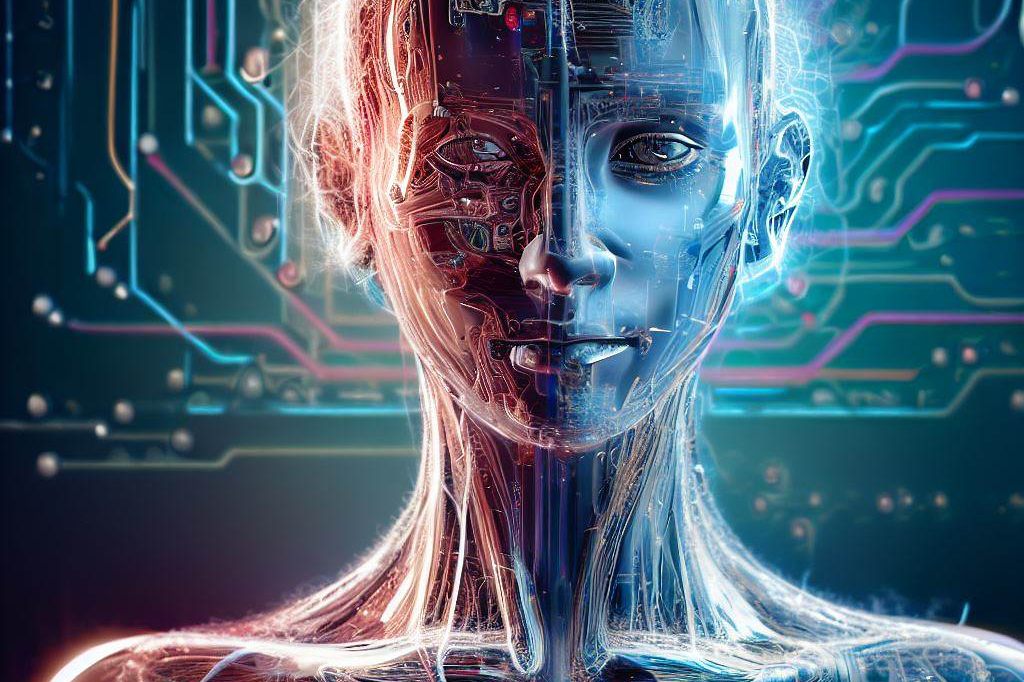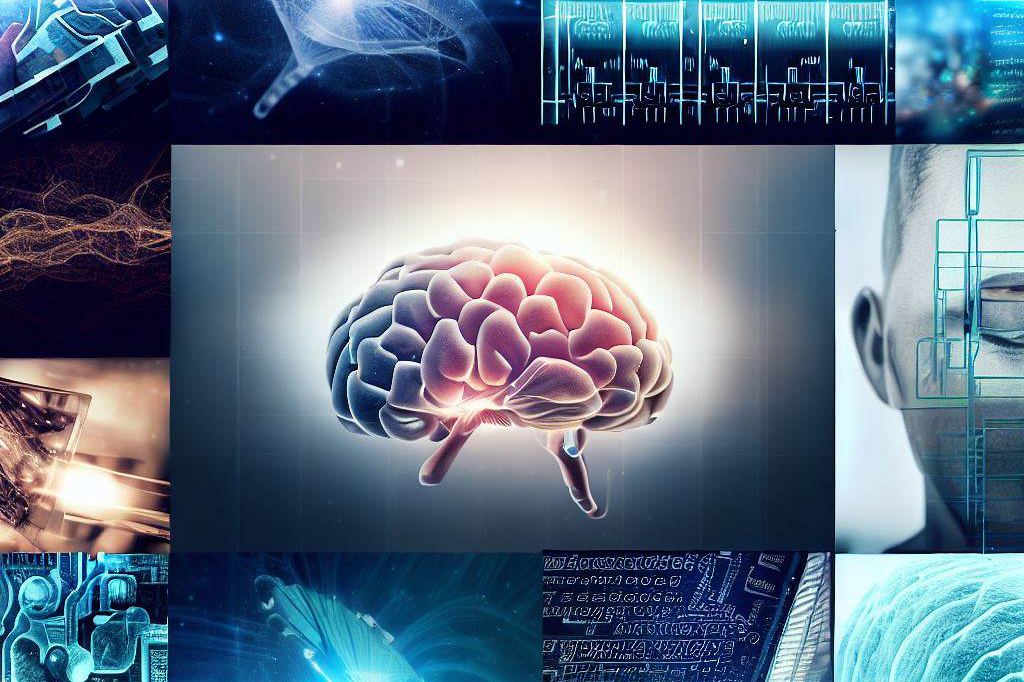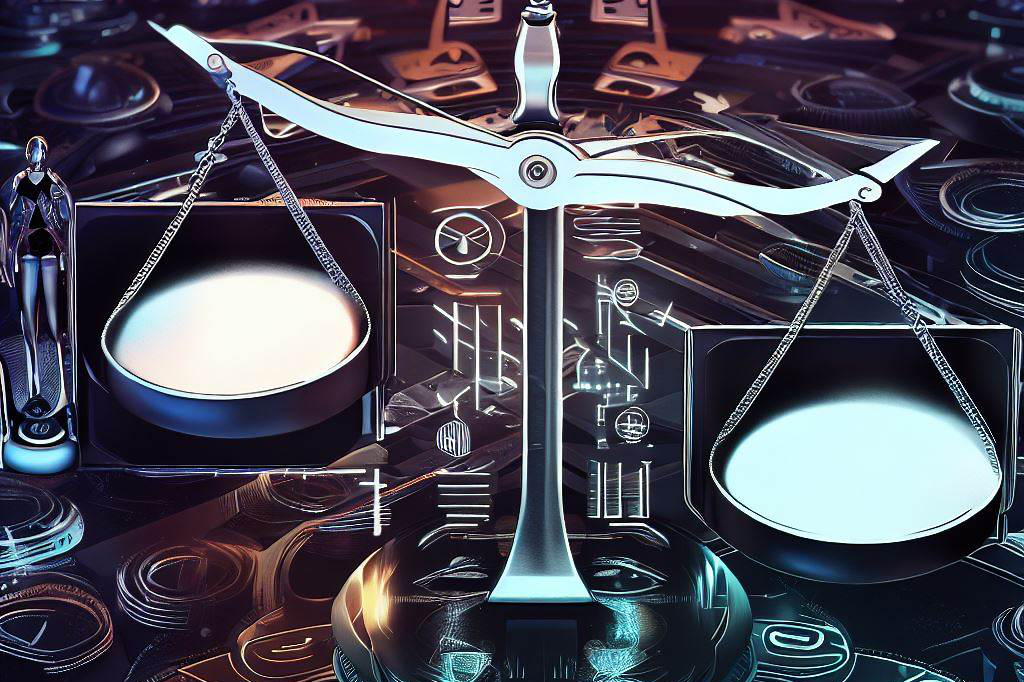Transhumanism is a movement that seeks to enhance human capabilities beyond the limitations of biology using science and technology. The term Transhumanism really started to gain traction in the 1990s when British Philosopher and Futurist Max More, defined it as
“an intellectual and cultural movement that affirms the possibility and desirability of fundamentally improving the human condition through applied reason, especially by developing and making widely available technologies to eliminate aging and to greatly enhance human intellectual, physical, and psychological capacities.”
The idea of transcending biological limitations has captivated humanity for centuries, from Greek myths of immortality to modern-day interest in cryogenics.
However, with recent breakthroughs in areas such as gene editing, brain-computer interfaces, and artificial intelligence, Transhumanism has become more than just a distant dream. It poses significant legal and political challenges that must be addressed if we are to navigate this new era in human evolution.
Definition of Transhumanism

Transhumanism encompasses a broad range of technologies that aim to enhance or extend human abilities beyond what is naturally possible. These can include everything from wearable devices that track our health metrics to gene editing techniques that enable us to eliminate genetic diseases or enhance certain traits. The ultimate goal is often seen as achieving immortality or superintelligence through merging humans with machines.
There are different approaches within the Transhumanist movement itself; some advocate for individual self-improvement through access to new technologies while others propose societal changes aimed at enhancing everyone’s abilities equally. In any case, transhumanism represents a profound shift in our understanding of what it means to be human.
Brief Explanation of Legal And Political Challenges Associated With Transhumanism

As with any emerging technology or movement with significant societal implications, legal and political challenges arise around issues such as regulation, ethical concerns regarding the use of these technologies on humans or animals (as test subjects), and ownership of intellectual property rights surrounding their development. Transhumanism presents unique challenges because it involves altering human biology, psychology, and even socio-economic status. For instance, there are concerns about the possibility of creating a class divide where only the wealthy have access to life-extending technologies or cognitive enhancement tools.
There is also a question of how governments should regulate these technologies while balancing individual autonomy with public safety. Moreover, privacy concerns arise as these new technologies allow for the collection of sensitive biometric data on individuals.
Transhumanism is a complex and multifaceted concept that has the potential to revolutionize our understanding of what it means to be human. However, it also presents significant legal and political challenges that must be addressed if we are to navigate this new era in human evolution responsibly.
Legal Challenges

Transhumanism challenges our traditional legal frameworks in a number of ways.
One major concern is the issue of intellectual property rights and ownership of transhumanist technologies. As human enhancement technologies become more advanced, there is a growing need to determine who owns the rights to these technologies and how they can be used.
For example, if a company develops a gene-editing technology that enhances human intelligence, who owns the intellectual property rights to that technology? Can it be patented, and if so, what are the implications for accessing this technology?
Another legal challenge associated with transhumanism is the ethical and legal implications of human enhancement technologies. These technologies often raise ethical questions about what it means to be human and whether or not we should alter our natural state in such significant ways.
For example, some people argue that using gene-editing technologies to enhance physical or mental abilities could create an unfair advantage for those who have access to them. Others worry about the potential unintended consequences of these technologies.
In addition, privacy concerns are also becoming increasingly important as we enter the age of biometric data collection. Transhumanist technologies like brain-computer interfaces require extensive monitoring and data collection on individuals’ neural activity, which raises serious privacy concerns.
Who has access to this data? How is it being used?
What happens if this information falls into the wrong hands? These are all critical questions that need to be addressed as we move forward with transhumanist research and development.
Intellectual Property Rights and Ownership
The issue of intellectual property rights and ownership is becoming increasingly important as more companies invest in developing transhumanist technologies. As these technologies become more advanced, they will likely become incredibly valuable assets that can generate significant profits for their owners. However, determining who owns these assets can be challenging.
One potential solution is for governments to create new legal frameworks specifically designed for regulating transhumanist technologies. For example, some experts have suggested the creation of a “Transhumanist Patent Office” that would be responsible for granting patents on these technologies and enforcing intellectual property rights.
Ethical and Legal Implications of Human Enhancement Technologies
The ethical and legal implications of human enhancement technologies are complex and multifaceted. One major concern is the potential for these technologies to create an uneven playing field in society.
If only a small group of people have access to these enhancements, it could create significant disparities in wealth and power. Another issue is the potential unintended consequences of human enhancement.
For example, if we use gene-editing technologies to enhance physical or mental abilities, what happens if those enhancements have unintended negative consequences? We may not fully understand the long-term implications of manipulating our genes in this way.
Privacy Concerns in the Age of Biometric Data Collection
Transhumanist technologies like brain-computer interfaces require extensive monitoring and data collection on individuals’ neural activity. This raises serious privacy concerns. Who has access to this data?
How is it being used? What happens if this information falls into the wrong hands?
One solution is to establish clear guidelines for how this data can be collected, stored, and used. Governments could create regulations that require companies developing these technologies to adhere to strict privacy standards.
Additionally, there need to be mechanisms in place for individuals to control who has access to their personal data. These mechanisms could include things like opt-in consent forms or user-controlled settings within brain-computer interface software platforms.
The Role of Government in Regulating Transhumanist Technologies

Transhumanist technologies have the potential to drastically alter the human experience, and as such, their regulation has become a pressing concern for governments around the world. One of the primary challenges in regulating these technologies is determining which governmental bodies should have oversight.
Should it be left to individual countries, or should there be an international consortium responsible for governing these advancements? Additionally, with so many different types of transhumanist technologies under development, determining which ones are subject to regulation and which are not creates additional complexity.
Another challenge is striking a balance between promoting innovation and ensuring safety. Some argue that government regulation stifles innovation and hampers progress, while others contend that unregulated advances could lead to unintended consequences.
Governments must also consider how regulations will impact access to these technologies – will they only be available to those who can afford them? If so, does this create greater inequality within society?
Public Opinion on Human Enhancement and Its Impact on Policy-Making
Public opinion plays a critical role in shaping policy decisions related to transhumanism. Many view human enhancement as inherently unethical or immoral, while others see it as a means of improving the quality of life. As such, governments must take public sentiment into account when creating policies around these issues.
One challenge is ensuring that public opinion is properly informed about transhumanist technologies. Misunderstandings or fear-mongering can lead to irrational opposition that hinders progress towards positive applications of these advancements.
Conversely, blind acceptance without appropriate evaluation can also lead to negative outcomes. As awareness around transhumanism continues to grow, governments must walk a fine line between being responsive to public opinion and making well-informed decisions based on scientific evidence and ethical considerations.
International Cooperation and Regulation in a Globalized World

Given the global nature of technological advancements today, it is essential that governments work together to establish a unified approach to regulating transhumanist technologies. This includes sharing information and best practices, as well as working towards common goals related to safety, ethics, and accessibility.
However, establishing international cooperation can be challenging given the vast cultural and political differences between nations. The potential for conflict arises when values around human enhancement differ greatly between countries.
For instance, some cultures may view disability as a natural part of life and reject any attempts to “fix” it through technological means, while others may view it as a problem that can be solved through transhumanist technologies. Furthermore, there are concerns about the potential for regulatory arbitrage – companies or researchers seeking out locations with lax regulations in order to avoid compliance with stricter rules elsewhere.
This creates a race-to-the-bottom scenario where advancements are made without appropriate consideration for ethical or safety implications. As such, establishing international cooperation and regulation in the realm of transhumanism requires careful consideration of cultural differences, ethical considerations, and economic incentives.
Case Studies
Playing God: The Legal Battle Over Gene Editing
One of the most widely-discussed cases in the field of transhumanism is the legal battle over gene editing. In 2015, a Chinese scientist announced that he had successfully edited the genes of a human embryo, sparking a global conversation about the ethics and implications of this technology. The scientific community was divided over whether the experiment represented a major breakthrough or a dangerous precedent.
Critics argued that gene editing could be used to create designer babies with enhanced physical or intellectual traits, leading to discrimination and inequality. Supporters countered that gene editing could be used to cure genetic diseases and improve human health.
The legal ramifications of gene editing were also hotly debated. In many countries, including Canada and the United States, there are currently no laws explicitly prohibiting gene editing in human embryos.
However, there are regulations governing embryo research and assisted reproduction that may apply. For example, in Canada, it is illegal to implant genetically modified embryos into women for reproductive purposes.
The impact of this case on transhumanist technologies has been significant. It has highlighted the need for clear legal frameworks governing human enhancement technologies, as well as ethical standards for their use.
The Legal Minefield of Brain-Computer Interfaces
Brain-computer interfaces (BCIs) are devices that allow direct communication between the brain and an external machine or computer program. While BCIs have potential applications in fields such as medicine and gaming, they also raise complex ethical and legal challenges.
One key issue is ownership rights over BCI data. If an individual’s thoughts can be read by an external device, who owns that information?
There are also questions surrounding informed consent – how can individuals make informed decisions about using BCIs if they do not fully understand how their data will be used? Another issue is privacy concerns surrounding BCI use.
If brain data is collected and stored, how can it be protected from misuse or abuse? Could it be used to manipulate individuals or even predict their behavior?
The legal landscape surrounding BCIs is still in its early stages, and further research is needed to fully understand the implications of this technology. However, these cases demonstrate the need for proactive legal and ethical frameworks to ensure that this technology is used responsibly.
Regulatory Challenges in the Age of Biohacking
“Biohacking” refers to the practice of modifying one’s body using DIY methods and technologies. While biohacking has been around for decades, advances in technology have made it easier than ever for individuals to experiment with their own biology. This raises a number of legal and regulatory challenges.
One key issue is the safety of biohacks – if individuals are using unregulated technologies, how can we ensure that they are not putting themselves at risk? There are also questions around intellectual property rights – who owns biohack designs or discoveries?
Furthermore, there are concerns about how government agencies will regulate biohacking. Some argue that heavy regulation would stifle innovation in this field, while others worry that insufficient regulation could lead to dangerous practices.
These cases illustrate the complex legal and political challenges associated with transhumanist technologies. As these technologies continue to evolve, it will be important for governments, scientists, and citizens alike to engage in thoughtful discussions about how best to navigate these challenges.
Future Implications

One of the key challenges associated with transhumanism is the difficulty of regulating and governing the use of new technologies that may fundamentally alter what it means to be human. As such, there is considerable uncertainty as to how policies will evolve over time, particularly as new technologies emerge and public attitudes towards them change. However, there are some predictions we can make about how the legal and political landscapes surrounding transhumanism may evolve.
Firstly, it seems likely that intellectual property rights will become an increasingly important issue in transhumanist debates. As technologies related to gene editing and human enhancement become more advanced, companies and individuals will have a strong incentive to try and patent these innovations so they can reap financial rewards from their discoveries.
This raises important questions about who owns these technologies, who has access to them, and whether intellectual property laws are equipped to handle the ethical implications of human enhancement. Secondly, we can expect that privacy concerns will continue to be a major issue as transhumanist technologies develop.
Biometric data collection is already widespread in many societies around the world, but as brain-computer interfaces become more common, individuals may be required to give up even more personal information in order to use certain services or take part in research studies. This raises questions about whether individuals have a right to maintain control over their own bodies in an age where technology creates unprecedented levels of transparency.
Potential Solutions
Given the challenges facing policymakers and experts involved with transhumanism-related legal issues, it is crucial that potential solutions are considered carefully before taking action. One possible solution would be for governments around the world to work together on developing international regulations concerning transhumanist research and development practices. Such regulations could establish minimum standards of safety for emerging technologies related to human enhancement or gene editing while at the same time protecting individual rights regarding privacy concerns.
Additionally, regulation could take into account the ethical implications of human enhancement, such as the potential for creating greater inequalities between the haves and have-nots. In this regard, regulators could mandate that companies developing transhumanist technologies must prioritize accessibility and equity when it comes to their products.
Policymakers could work on creating more public awareness and education regarding these issues in order to create a more informed public that can play a key role in shaping the legal landscape around transhumanism. This approach would involve working closely with the scientific community, educators and experts to develop educational materials about emerging technologies related to human enhancement and gene editing.
Takeaways
We have seen that, while there is much promise in the potential benefits of human enhancement technologies, there are also significant concerns that must be addressed.
The legal landscape surrounding transhumanism is complex and constantly evolving, with new ethical and practical questions arising as technology advances. One key takeaway from our discussion on legal challenges is that intellectual property rights and ownership of transhumanist technologies will become increasingly important in the years to come.
As these technologies become more widespread, it will be essential to establish clear rules about who owns them and how they can be used. Additionally, ethical concerns surrounding human enhancement will need to be addressed through thoughtful regulation and oversight.
In terms of political challenges, we have seen that public opinion plays a significant role in shaping policy around human enhancement. As such, it will be important for advocates of transhumanism to engage with the public in a way that fosters understanding about the potential benefits of these technologies, while also addressing any concerns or fears they may have.
Overall, navigating the complex landscape of transhumanism from a legal and political perspective will require careful consideration of both individual rights and societal impacts. While there are certainly challenges ahead, by working together to develop thoughtful solutions, we can potentially harness the power of technology to improve lives for generations to come.

C M, a seasoned editor, journalist, and consultant, is deeply fascinated by the convergence of technology, space, and the future of humanity.
With a particular interest in transhumanism, futurology, and the philosophical and ethical dimensions of these domains, C M serves as the lead contributor to TranscendSphere and SpaceSpotlight.
When not penning insightful articles on these rapidly evolving fields, C M indulges in their love for podcasts and books, proudly embracing their status as a ‘Happy Nerd Extraordinaire!’





